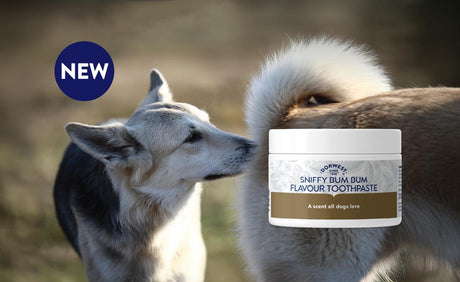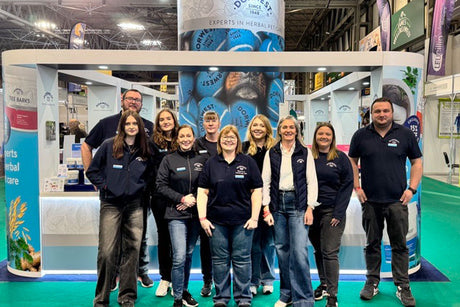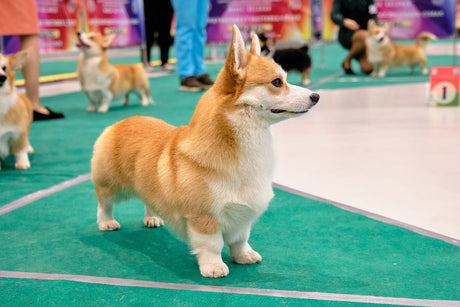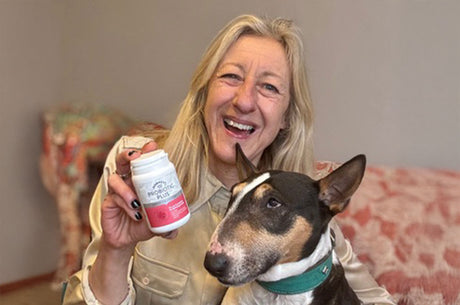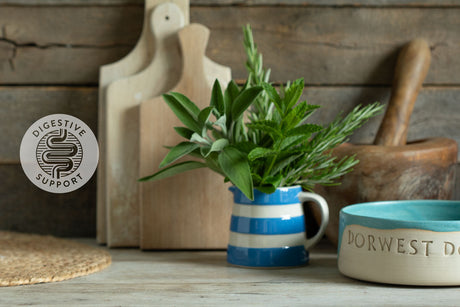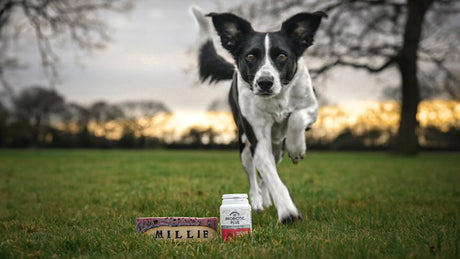
There are times in the year when we all may spend a little more time at home than usual. Whether it's the annual school summer holidays or unexpected situations, such as COVID19. But what happens when the realities of daily life come back into play? Returning to work and school can feel un-settling to us but even more so for your four-legged friend. The good news is, there's plenty you can do to help support your dog during these transition phases. The aim of this blog post is to share some top tips for overcoming separation anxiety in dogs, which can occur during such changes at home...
What Is Separation Anxiety In Dogs?
Separation anxiety in dogs occurs when they get excessively stressed when you're not with them. According to The RSPCA, research suggests 8 out of 10 dogs suffer from separation anxiety. As social animals, it's understandable to see why so many do. Dogs commonly display this in a number of ways within the first 30 minutes of you leaving, some of which you may have mistaken for simple bad behaviour:
• Barking / howling
• Pacing, panting and shaking
• Destruction
• Toileting inside
Nobody likes to think of their dog becoming anxious and thankfully, there are a number of ways to help your dog’s separation anxiety.
1. Start To Recreate Their New Routine Early
To go from lots of activity at home to sudden quietness can leave your dog feeling anxious. Imagine if roles were reversed and your dog suddenly wasn't with you - no doubt you'd feel anxious too. Therefore, when you know your home is due to become quieter e.g. returning to school or work, preparation in advance is a good starting point.
When our families are back to school or you're back to work, it's more likely you'll have a regular routine e.g. wake-up time, feeding time, walkies etc. If you know what your routine is likely to be, try to recreate it in the days and weeks leading up to it really happening. This way, your dog isn't too confused and there is an element of routine in place, which dogs like.
2. Encourage Them To Spend Some Time On Their Own

Dogs are often described as "little heartbeats at our feet." Whilst it's a wonderful feeling to have our dogs with us all the time, it's important to acknowledge your dog needs to be content spending some time alone too. Firstly, ensure they have a safe and comfortable space to be when you're not with them. With this in place, you can start encouraging them to stay on their bed and reward this with a treat (e.g food, a toy, attention). Build up the distance between you both gradually and consistently and never punish your dog if they don't do as you've asked.
For example, start with them staying on their bed when you're just a few steps away and eventually build up to them being in a room or part of the house on their own. You can then build up to leaving the house for short periods of time, with the aim of building up to an hour without any displays of separation anxiety. Once you're past this point, most dogs are content with being left for longer periods of time e.g. a couple of hours. All of the above helps to show your dog you will be back. Patience is key.
When you do leave the house, do so calmly and without too much fuss too, as this may make your dog anxious.
3. Keep Them Occupied
Mental boredom can lead to dog separation anxiety too, so consider how you can keep your dog entertained. Firstly, taking them on a good walk before you leave them is advisable. This way they've had some special one-to-one time with you, they've had fun and they've also minimised any excess energy. A good sleep is likely to be welcomed by them!

Secondly, consider leaving a long-lasting toy such as a Kong. These toys can be beneficial as you can stuff them with food, such a peanut butter (without xylitol). Your dog will need to work hard to get it, so a good dose of mental stimulation is provided.
The key with any toy you leave is that it's safe (e.g. no choking hazard) and its special e.g. it's only present when you’re not at home with them. However, it may be sensible to test in advance with your dog first, so you can foresee any potential issues with whatever you decide to leave with your dog.
It's also important to be mindful of your dog’s weight too, so if they're having extra food treats, minimise the amount you give them for breakfast/dinner.
4. A Bit Of Extra Company
Your dog may have become used to the humdrum of family life. For example, is the radio or TV usually on when you're home? Consider repeating common habits such as these when you're not at home, to provide your dog with some consistency and some added company. For example, there are special 'pet music' playlists available via Spotify which your dog might like to try.
You may also want to consider leaving an item of clothing or an old towel with your scent on to support your dog too. Just be mindful they can't hurt themselves on your item of clothing (avoid buttons and zips) and perhaps avoid doing so if your dog is known to chew.
If you know you're going to be out of the house for a period of more than 4 hours, consider a dog walker or sitter who can pop in and spend some quality time with your dog. This extra bit of company can really help to break up the day for your dog and ensure they're receiving toilet breaks too.
5. Check In At Home
No doubt you'll be pining for your dog as much as he or she will be for you. Thankfully we live in a technological age which means there are plenty of cameras you can install at home to keep an eye on them. There are varying price ranges available for all budgets. Sync with your phone & you can put your mind at ease and intervene if necessary, e.g return home earlier than planned.
Using such technology also gives you a better idea of exactly how your dog copes when you're not there so you can introduce further assistance if required. Knowledge is power, plus it's comforting to see your dog when you're not physically at home.
6. Some Extra Help...

Some dogs may require a little extra help with their separation anxiety. We have two main ways of helping you with this. Firstly, our Scullcap and Valerian Tablets for Dogs can be introduced in anticipation of changes at home. The earlier you start, the better the results are likely to be. The tablets help to relax your dog gently without drowsiness or sedation. They work as the herbs are nervines which help to naturally relax the nervous system. This reduces anxiety but doesn't sedate muscles.
If your dog’s separation anxiety is particularly worse on a specific day, you may want to try Valerian Compound too. This can be added directly to their mouth or food or sprinkled on their bedding. It is fast acting, so within just 30 minutes, you should notice changes in your dog’s behaviour. The effects are short-lived so it's recommended you combine with the Scullcap and Valerian Tablets for longer lasting results.
Other extra help can be found via a clinical animal behaviourist. They may be able to identify some further ways to support your dog with separation anxiety training. Alternatively, they may uncover other potential issues which may help with your dog’s separation anxiety once addressed.
Ready To Go Back To Work Or School?
So, do you feel prepared for your return to work or school now? Fingers crossed the above will enable you to prepare your dog and minimise separation anxiety. Let us know if you feel ready and if there's anything we can do to help.
Buy Dorwest Scullcap and Valerian Tablets online or get in touch with our experts today to find out more on 01308 897 272. Alternatively, email us at info@dorwest.com or fill out our online contact form. Plus, get free UK delivery on orders over £50 and 10% off full-priced products for life when you join the Dorwest Loyalty Club.
